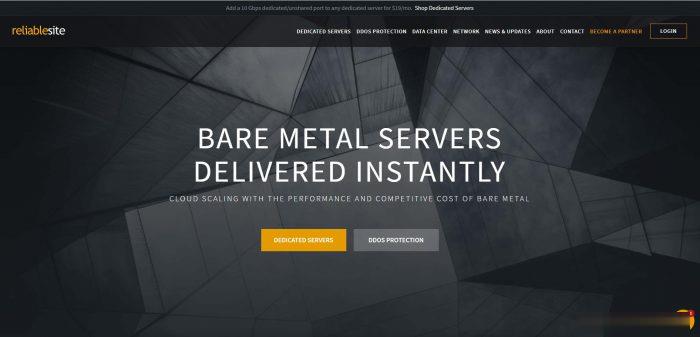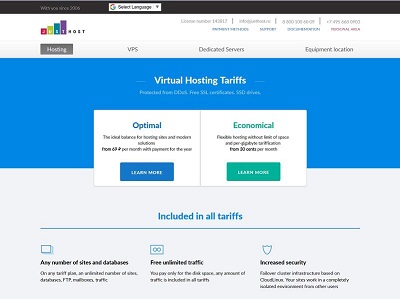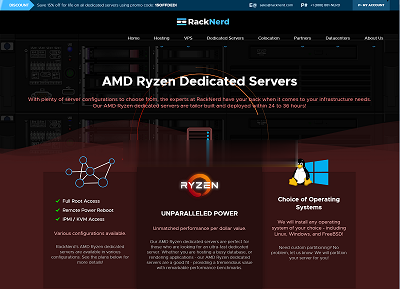lecture[说明]tcp-ip_day2 国外大学课件
TC P/IP
Binary, IP addre ssing
Binary Numbers
When we look inside the packets sent across a TCP/IP network,most ofthe information isrepresented using the binary number syst'em.And in particular,when we discuss that globaladdressing system introduced earlier,we ll discover that tho se global addresses are in fact 32 bitbinary numbe rs.
I find that the best way to introduce the binary numbering system is to learn to count in binary,andthat the best way to do that is to imagine a binary odometer.
You all know about odometer's: they are the displays that show how many kilometers (or miles, ifyour car is old like mine)youve put on your car.
((count in decimal))
((use 8 digit odometer))
Binary,unlike decimal (which has ten digits,0-9),has only two digits:0 and 1.So a binaryodometer will move a bit differently.
((count in binary))
((use 8 digit odometer))
((explain why–bytes))
Now this odometer analogy is useful for a first introduction,and isn't too bad if all you needed toaccomplish was counting from zero(or perhaps identifying small binary numbers).
But it would be tedious, to say that the least, to use this method to, e.g., identify the binaryrepresentation o f 25510,or determining the dec imal o f 101111012 .
Bina ry–decimal
An easier method for converting from binary to decimal is to determine the value of a particular bitin the binary number,based on its placement in the number(sometimes called its significance). It's pretty easy to determine the value of any particular bit:
(1)The least significant (rightmost)bit has a value ofone
(2)Bit n=(n-1)*2
1 0 1 1 1 1 0 1
128 64 32 16 8 4 2 1
To calculate the value of a binary=number, just add up the value of all the bits that are'on', i.e.,equal to one: 128+32+16+8+4+1 189
Decimal to binary
It's not quite as simple to convert from decimal to binary. Here’s one way to do it:
(1)Find the first bit whose value is greater that the value of the decimal number your areconverting(2) If n is that bit found in(1), turn on the bit n-1, if n-1 exists,else go to(5)below
(3)Subtract the value of n-1 from the original decimal number;
(4)Return to(1), repeat using the value you obtained from the subtraction in(3)
(5)Set any other bits to zero
Example:222
X 1 1 0 1 1 1 1 0
256 12864 32 16 8 4 2 1
222-128=94
94-64=30
30-16=14
14-8=6
6-4=2
2-2=0
Global Addressing
Recall from our introduction that a TCP/IP internet employs global addressing, i.e.,every'host'onan entire internetwork is uniquely identified by its address.
Now since TCP/IP is designed to interconnect networks, the way in which the global addressesuniquely identify hosts is by
(1) identifying the network o f that ho st
(2) identifying the host on that network
Conceptually, these global addresses operate something like the addressing in the followingdia gram:
A(2) B(2) C(2)
| | |
|----------|xx|-------------|xx|--------------|
| | |
A(1) B(1) C(1)
((Don't confuse this diagram with the similar one from the previous lecture,where we weredistinguishing local from global addressing.))
Where the letter identifies the network,and the number identifies the host on that network. Notice that,considered in isolation,neither the network portion nor the host portion uniquelyidentifies the host–it is when taken together that this constitutes a global addressing system.IP addressing
The protocol in the TCP/IP suite which specifies addressing is IP, the Internet Protocol. Although comparable to our alpha-numerical addressing in the above diagram, it's not quite ass imp le.
Every'host' in a TCP/IP internet is identified by a 32 bit binary number.An example might be:10101101 11001011 11110000 10101011
Now like our alpha-numerical addressing scheme,part of this 32 bit binary number identifies thenetwork,and part of it identifies the host on that network.
What portion identifies each is not,however,completely fixed.We'll begin our explanation ofthisby considering the original IP address scheme:
Classful IP addressing
In the original scheme,how a 32 bit IP address was divided into network portion and host portionwas based on the values of the first few most significant bits
Clas s A:0xxxxxx xxxxxxxx xxxxxxxx xxxxxxxxle ftmost byte network portion
Clas s B: 10xxxxxx xxxxxxxx xxxxxxxx xxxxxxxxle ftmost 2 byte s network portion
Clas s C: 110xxxxx xxxxxxxx xxxxxxxx xxxxxxxxle ftmost 3 b ytes netwo rk portio n
Clas s D: 1110xxxx xxxxxxxx xxxxxxxx xxxxxxxx
Clas s E: 1111xxx xxxxxxxx xxxxxxxx xxxxxxxx
Only Class A,B,C are important for now.
Dotted Decimal Representation
Since this 32 bit representation isn't very digestable by humans,normally we refer to IP addressesin d ec imal, like this:
1. Break up the 32 bit IP addre ss into four 8 bit chunks.
2. Treating each ofthese'octets'as a separate number, translate them into a decimal
3. Separate each dec imal number from its ne ighbours with a dot
((couple of examples))
And now we should be able to figure out the decimal representation of our three classes of internetaddre s se s:
ClassA:
00000000000000000000000000000000
-01111111 11111111 11111111 11111111
=0.0.0.0 andeverything
127.255.255.255 inbetween
((ex amples))
ClassB:
10000000000000000000000000000000
- 10111111 11111111 11111111 11111111
=128.0.0.0
191.255.255.255
Back to the division into network and host portions: in the case of Class A the first decimal numberdesignates the network,wh' ile the next three can be seen as one big number,designating the host(i.e.,pretend the dots arent there).
Class B, the first two, the net, the final two the host.
Class C, the first three the net, the final one the host.
Special IP addresses
Not every IP address in the 32 bit address space can be assigned to a ho st.
- If all the host bits in a particular Class A,B or C address are set to 0, this refers to the networkitse lf(e g, 192.168.1.0)
If all the host bits are set to 1, then this refers to all the hosts on that network; this isreferred to as the directed broadcast address for that network
(e.g. 172.16.255.255)
(e.g. 10.255.255.255) these addresses can be routed.
If all the bits in the 32 bit address are set to 1, this referred to as the limited broadcast
(255.255.255.255) this addres s cannot be routed.
If all the net bits are set to 0; the'n in my'experience this is meaningless,unless the hostpart is also set to 0; this often refers to this host.
(used in DHCP as source address before the client receives an address lease)
(Linux interprets it as 'this ho st' in a ping, in fact it pings the loopback)
Any address' in the C lass A network 127.0.0.0 refers to the'loopback' interface:a pseudointerface that doesn t rely on the existence of a physical network or even a Network InterfaceCard(NIC)for testing and software relying on a TCP/IP stack without a network connection.Address-space reserved for private Internets
ClassA: 10.0.0.0–10.255.255.255
ClassB: 172.16.0.0–172.31.255.255
Class C: 192.168.0.0–192.168.255.255
Subnetting
-The original class A,B and C addressing scheme isn't very flexible.
If you have a netwo' rk with about 250 hosts,a class C works pretty well,but if you have a networkwith far less, it s a waste of address space.
If you have a networ'k with about 65000 hosts,a class B works,but e.g., if your network has 300hosts,a class isnt going to work,and a class B is a waste.
Class A can accommodate over 10 million hosts.
-For these reasons, subnetting was specified. (RFC 950)
Subnet addresses
RFC 950 discusses optionally subdividing the 32 bit address into three portions. In addition to:
1.A network portion
2.A hostportionthe standard specifies
A subnetportion
-The general id' ea is that,even though an organization might control, say,a particular class B addressspace, it doesnt want just one single LAN or physical network.
-For example, the University of Calgary has 136.159.0.0,but it would probably want to create anumb er o f phys ical networks.
-The process of subnetting involves 'stealing' some number ofbits from the host portion, to designatethe subnet with.
-Bits must be stolen as a contiguous series starting from the most significant host bit. (RFC
950 recommendation.not mathematically required,but universally adhered to)Let's start with a simple example:
Suppose you want to subnet the Class B network address: 172.16.0.0
What you could do is use the third byte to refer to the subnet,and the last byte to refer to the host:
172.16.10.26: subnet 10,host 26
172.16.21.21 : subnet 21,host 21
But,how are network hosts supposed to know what subnet they are on?
Remember,hosts can determine that they are on a class B network and what class B network theyare on,merely by inspecting their IP address.
172.16.0.26 is class B(10xxxxx. . .)
But they cannot determine their subnet by inspecting their address.
Subnet masks
The way you specify a subnet is by adding more information,over and above the IP address. In addition,we must specify a subnet mask:
A subnet mask is a 32 bit number,where all the network and subnet bits are set to 1,and allthe host bits are set to 0
So inour example:
172.16.10.26
IP: 10101100.00011000.00001010.00011010sub mask: 11111111.11111111.11111111.00000000
4. This netmask determines the portion of the 32 bit number used to designate the subnet.-With this in mind, let's move onto a more complex example:
256(-2 for broadcast and net address)for hosts.So we had:
172.16.0.0, 172.16.0.1, 172.168.0.2, . . .
172.16.1.0, . . .
172.16.2.0, . . .
…
But if the portion reserved for th'e subnet doesn't correspond to a byte,we pretty muchhave to work in binary(at least until we re more comfortable)
Example:
Suppose we have the Class C address 192.168.0.0,and we want 6 subnets.
11000000.10101000.00000000.00000000
11111111.11111111.11111111.11100000
(NB 2n=the number of possible values,where n=#bits)
Invalid subnetting
RFC 950 suggests that a subnet designated by“all ones”or“all zeros”(in the subnet portion of theaddress) should not be used.So,e.g., the following would be invalid:
172.16.0.1 (255.255.255.0) ('all zeros')
172.16.255.1 (255.255.255.0) ('all ones')
The r”eason this i's su'ggested is to preserve the interpretation of“all zeros”(meaning'this')and“allones (meaning all).
Normally they are not thus interpreted,but sometimes they are interpreted as invalid. (Theproblem is ambiguity: in certain cases we cannot distinguish a reference to the(classful)networkitself,as opposed to a subnet on that network. For example,does 172.16.0.0 refer to the class Bnetwork itself,or to the all zeros subnet? Does 172.16.255.255 refer to the network broadcast,orthe all ones broadcast address?)
There are a few other cases of invalid subnetting:
1. Borrowing a single bit. (we only get subnets 1 and 0,which RFC 950 recommends against)
2. Borrowing all the bits (no room left for hosts)
3. Borrowing all but one bit(leaves only subnet and broadcast addresses)
(There are cases where 3. is legitimate, in particular for point-to-point,non-broadcast links.)Determining local versus remote delivery
Classful:
If(network address o f dst=network address o f src)Then( local delivery)
Sub netted:
If(dst ip&netmask=src ip&netmask)
Then( local delivery)
B itwise'and'
0&0=1
1&0=0
0&1=0
1&1=1
- lecture[说明]tcp-ip_day2 国外大学课件相关文档
- anddoesn[小学]tcp-ip day4 国外大学课件
- 美国[攻略]国外ip地址
- 产权IP版权交易平台如何进行融资交易,国外有哪些模式值得借鉴
ReliableSite:美国服务器租用,洛杉矶/纽约/迈阿密等机房;E3-1240V6/64GB/1TSSD,$95/月
reliablesite怎么样?reliablesite是一家于2006年成立的老牌美国主机商,主要提供独服,数据中心有迈阿密、纽约、洛杉矶等,均免费提供20Gbps DDoS防护,150TB月流量,1Gbps带宽。月付19美金可升级为10Gbps带宽。洛杉矶/纽约/迈阿密等机房,E3-1240V6/64GB内存/1TB SSD硬盘/DDOS/150TB流量/1Gbps带宽/DDOS,$95/月,...

justhost:“第4次VPS测评”,8.3元/月,200M带宽,不限流量,KVM虚拟,4个俄罗斯机房应有适合你的
justhost.ru官方来消息说已经对网络进行了比较全面的优化,针对中国电信、联通、移动来说,4个机房总有一个适合中国用户,让站长进行一下测试,这不就有了这篇有关justhost的VPS的第四次测评。本帖主要关注的是网络,对于其他的参数一概不管! 官方网站:https://justhost.ru 最低配VPS:8.3元/月,KVM,512M内存,5G硬盘,200M带宽,不限流量 购买链接:...

racknerd:美国大硬盘服务器,$599/月,Ryzen7-3700X/32G内存/120gSSD+192T hdd
racknerd当前对美国犹他州数据中心的大硬盘服务器(存储服务器)进行低价促销,价格跌破眼镜啊。提供AMD和Intel两个选择,默认32G内存,120G SSD系统盘,12个16T HDD做数据盘,接入1Gbps带宽,每个月默认给100T流量,5个IPv4... 官方网站:https://www.racknerd.com 加密数字货币、信用卡、PayPal、支付宝、银联(卡),可以付款! ...

-
投标人chrome计算机网络实验系统iphone连不上wifi苹果8p连接不了WiFiiphone连不上wifi苹果手机为什么突然连不上家里的wifi?win7telnetwindows7旗舰版中telnet在哪360chrome360Chrome 世界之窗极速浏览器 ChromePlusicloudiphone苹果手机显示"已停用,连接itunes"是什么意思win7关闭135端口win7系统怎么关闭135端口?网上很多方法都不好用!csshackcss常见的hack方法有哪些迅雷下载速度为什么现在迅雷下载的速度比原来慢得多?